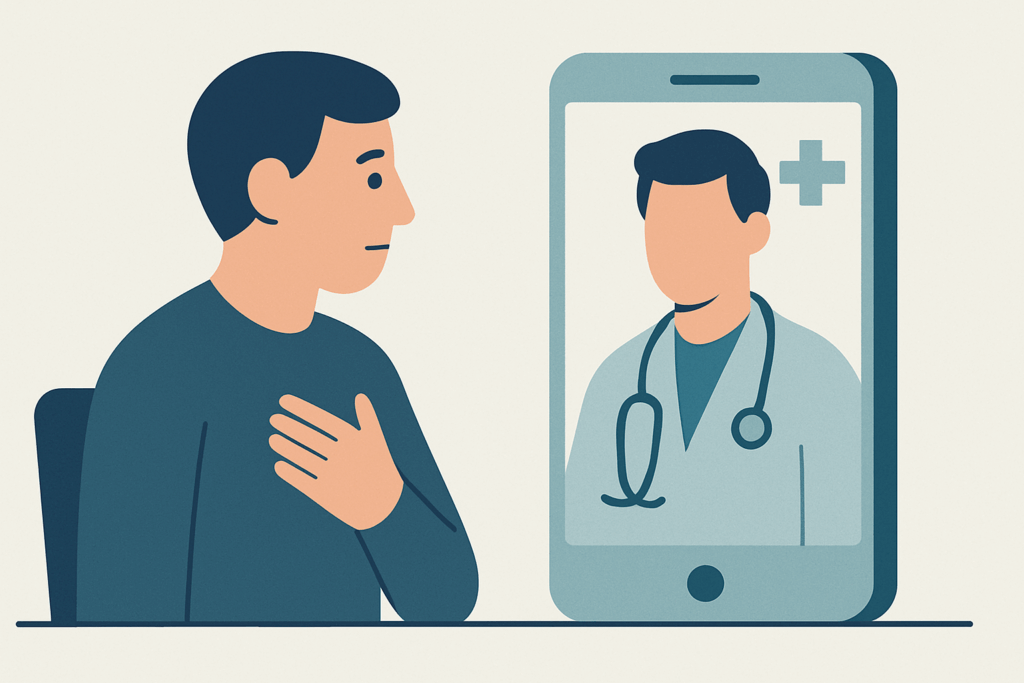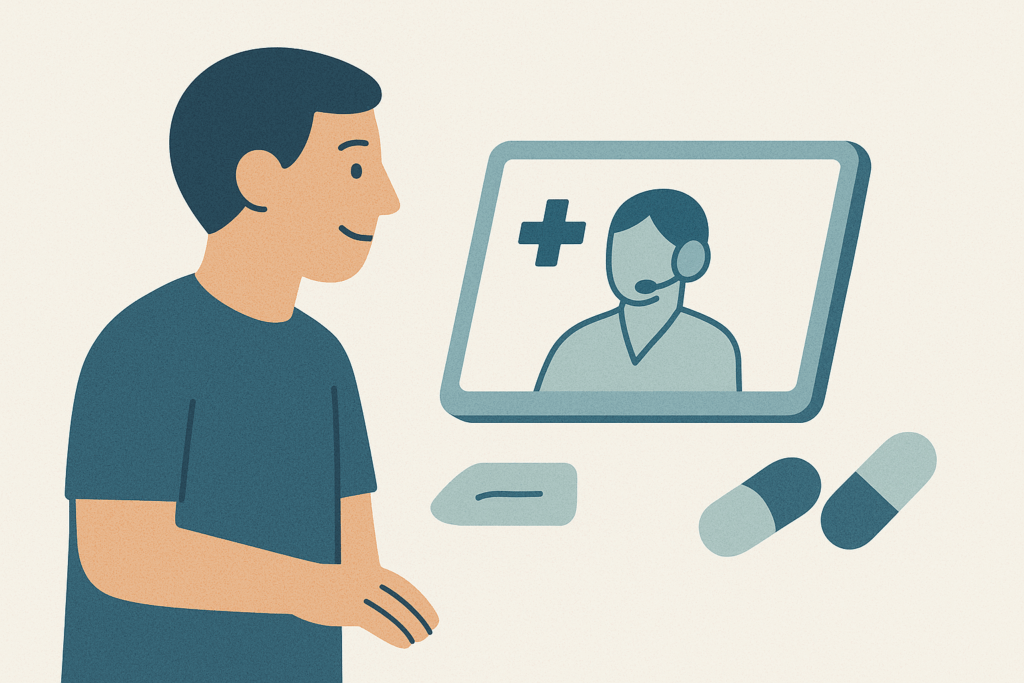Overview
Virtual doctor visits have transformed healthcare delivery by offering five key benefits: unmatched convenience, expanded access to care especially for rural and mobility-challenged patients, cost-effectiveness with lower prices than in-person visits, reduced exposure to illness, and improved continuity of care through better treatment adherence and data integration. This rapidly growing telehealth approach, which now accounts for approximately 15% of all healthcare encounters, represents a significant advancement that creates a more inclusive, efficient, and patient-centered healthcare system while maintaining quality care.
Table of Contents
In the rapidly evolving landscape of modern healthcare, virtual doctor visits have emerged as a transformative solution for patients seeking medical care. What was once considered an alternative option has now become a mainstream approach to healthcare delivery. According to a recent study by the American Medical Association, telehealth usage has increased by over 38-fold since the pre-pandemic era, with virtual doctor visits now accounting for approximately 15% of all healthcare encounters in 2023.
At Dr. Telx, we’ve witnessed firsthand how online healthcare is revolutionizing the patient experience. Virtual consultations offer significant advantages for modern patients, from convenience to cost savings. As we continue to embrace digital transformation in healthcare, understanding these benefits becomes increasingly important for making informed decisions about your health management approach.

Benefit #1: Unmatched Convenience
Perhaps the most immediately apparent advantage of virtual healthcare is the remarkable convenience it offers. Online doctor visits eliminate the need to travel to a physical office, find parking, and sit in waiting rooms – often surrounded by other sick patients. Instead, you can connect with a healthcare provider from the comfort of your home, workplace, or even while traveling.
Sarah, a working mother of three from Colorado, shares her experience: “Virtual visits have been a game-changer for our family. Last month, my son developed a rash that needed medical attention. Instead of taking time off work, arranging childcare for my other children, and spending hours at a doctor’s office, I scheduled a virtual appointment during my lunch break. The doctor diagnosed the condition, sent a prescription to our local pharmacy, and we had treatment underway within hours – all without disrupting our family’s busy schedule.”
This convenience factor extends beyond just saving time. Virtual visits allow for more flexible scheduling options, including evening and weekend appointments that accommodate various work schedules and lifestyles. For many patients, this accessibility makes it significantly easier to prioritize preventive care and address health concerns promptly.
Benefit #2: Expanded Access to Care
One of the most profound impacts of telehealth is its ability to break down geographical barriers to quality healthcare. Patients in rural or underserved communities often face significant challenges accessing specialists and comprehensive medical services due to distance and provider shortages.
Virtual healthcare bridges this gap effectively. According to the Rural Health Research Center, patients in rural areas who utilize telehealth services save an average of 40 miles of travel per medical visit. More importantly, they gain access to specialists and medical expertise that may not be available locally.
For individuals with mobility challenges, chronic conditions, or disabilities, virtual visits remove physical barriers to care. A 2022 survey by the National Council on Disability found that 78% of patients with mobility limitations reported improved access to healthcare services through telehealth options.

Benefit #3: Cost-Effectiveness
Virtual healthcare typically offers a more affordable alternative to traditional in-person visits. This cost advantage stems from multiple factors. First, providers often have lower overhead costs for virtual visits, allowing them to offer more competitive pricing. Second, patients save on expenses associated with in-person visits, including transportation, parking, and potential childcare costs.
A comparative analysis conducted by the Healthcare Financial Management Association found that the average cost of a virtual primary care visit ranges from $40 to $80, while equivalent in-person visits average between $130 and $180. Additionally, many insurance providers now offer equal or even preferred coverage for telehealth services, recognizing their cost-effectiveness.
For patients managing chronic conditions requiring regular check-ins, these savings can be substantial over time. The reduced financial burden helps remove one of the most common barriers to consistent healthcare access, potentially leading to better health outcomes through more regular monitoring and treatment adjustment.
Benefit #4: Reduced Exposure to Illness
The COVID-19 pandemic highlighted the importance of minimizing unnecessary exposure to contagious illnesses. Virtual doctor visits provide a protective buffer, especially for vulnerable populations such as the elderly, immunocompromised individuals, or those with chronic conditions.
By avoiding crowded waiting rooms during cold and flu season, patients can significantly reduce their risk of contracting secondary infections while seeking treatment for other health concerns. Dr. Elizabeth Chen, infectious disease specialist, explains: “Virtual visits represent one of our most effective tools for infection control outside of hospital settings. They allow us to provide necessary care while minimizing the risk of disease transmission, which is particularly valuable for our most vulnerable patients.”
This benefit extends beyond pandemic situations. For routine follow-ups, medication adjustments, and minor acute care needs, virtual visits offer a safer alternative that doesn’t compromise the quality of care delivered.

Benefit #5: Continuity of Care
Perhaps one of the most underappreciated benefits of virtual healthcare is how it enhances continuity of care – the consistent and coordinated delivery of healthcare services over time. The ease of scheduling virtual follow-up appointments means patients are more likely to attend them, leading to better adherence to treatment plans and more consistent monitoring.
Modern telehealth platforms also integrate seamlessly with health monitoring devices and electronic health records. Patients with hypertension, diabetes, or heart conditions can share real-time data from home monitoring devices during virtual consultations, allowing for more informed treatment decisions.
A 2023 case study published in the Journal of Telemedicine and e-Health examined patients with type 2 diabetes who incorporated regular virtual visits into their care plan. The study found a 32% improvement in medication adherence and a significant reduction in HbA1c levels compared to patients receiving traditional care alone. This demonstrates how virtual healthcare can enhance chronic disease management through more frequent touchpoints and data-informed care.
The Future of Virtual Healthcare
As we look ahead, virtual doctor visits will likely become an increasingly integral part of the healthcare ecosystem. Technological advancements continue to enhance the virtual care experience, with improvements in diagnostic capabilities, integration with wearable devices, and more sophisticated platforms for patient-provider interaction.
At Dr. Telx, we believe the future of healthcare lies in a balanced approach that leverages both virtual and in-person care to meet patients’ unique needs. While some situations will always require physical examinations, many aspects of healthcare can be effectively delivered through virtual channels, enhancing accessibility, affordability, and convenience.
The digital health landscape continues to evolve rapidly, with new innovations emerging regularly. Healthcare providers who embrace these technologies are positioned to deliver more patient-centered care while improving operational efficiency.
Conclusion
Virtual doctor visits represent a significant advancement in healthcare delivery, offering numerous benefits that enhance the patient experience while maintaining quality care. From the unmatched convenience of accessing healthcare from anywhere to expanded access for underserved populations, the advantages are clear and compelling.
Cost-effectiveness remains another crucial benefit, making healthcare more affordable and accessible for many patients. Additionally, the reduced exposure to illness and enhanced continuity of care contribute to better health outcomes and patient satisfaction.
As technology continues to advance, we can expect virtual healthcare to become even more sophisticated and integrated into our healthcare system. For patients seeking convenient, affordable, and effective healthcare options, exploring telehealth services is certainly worth consideration.
Ready to experience the benefits of virtual doctor visits firsthand? Getting started is simple. Visit www.drtelx.com to learn more about our services, create an account, and schedule your first virtual consultation. Our network of experienced healthcare professionals is ready to provide the high-quality, accessible care you deserve, regardless of your location.
In embracing virtual healthcare, we’re not just adopting a new technology – we’re creating a more inclusive, efficient, and patient-centered healthcare system for everyone.
Frequently Asked Questions
What medical conditions can be treated through a virtual doctor visit?
Virtual doctor visits are suitable for a wide range of non-emergency conditions including cold and flu symptoms, allergies, skin conditions, minor infections, mental health concerns, medication management, and chronic disease monitoring. However, conditions requiring immediate physical examination, emergency situations, or those needing diagnostic tests that can’t be performed remotely may still require in-person care. Always check with your healthcare provider about whether your specific concern is appropriate for a virtual consultation.
Are virtual doctor visits covered by insurance?
Most major insurance providers now cover virtual doctor visits, especially since the COVID-19 pandemic prompted widespread adoption of telehealth services. Coverage policies vary by provider and plan, so it’s important to verify with your specific insurance company before scheduling. Many insurers have actually expanded their telehealth coverage and some even offer reduced copays for virtual visits compared to in-person appointments, recognizing their cost-effectiveness.
How do I prepare for my first virtual doctor visit?
To get the most from your virtual doctor visit, prepare by: 1) Testing your technology (camera, microphone, internet connection) in advance; 2) Finding a quiet, well-lit, private space for the appointment; 3) Making a list of symptoms, concerns, and questions; 4) Having your current medications visible to show the doctor if needed; 5) Gathering any relevant medical devices like thermometers, blood pressure monitors, or glucose meters; and 6) Having your pharmacy information ready for any potential prescriptions. Being prepared helps ensure a productive and efficient consultation.
Are virtual doctor visits as effective as in-person appointments?
Research consistently shows that for appropriate conditions, virtual doctor visits can be just as effective as in-person appointments. A 2022 study published in JAMA Network Open found comparable clinical outcomes between telehealth and in-person care for many common conditions. Virtual care excels in areas like medication management, follow-up care, mental health services, and chronic disease monitoring. The effectiveness depends on proper patient selection, provider training in telehealth delivery, and appropriate technology. However, some conditions still require physical examination or diagnostic testing that can only be performed in person.
How secure are virtual doctor visits for sharing my personal health information?
Reputable telehealth providers implement robust security measures to protect patient privacy. These include end-to-end encryption for video consultations, secure patient portals for messaging and documentation, and compliance with HIPAA regulations. Before your appointment, verify that your provider uses a HIPAA-compliant telehealth platform. Avoid using public Wi-Fi networks for your virtual visits, and ensure you’re in a private location where conversations can’t be overheard. With these precautions, virtual doctor visits can maintain the same confidentiality standards as traditional in-person appointments.

